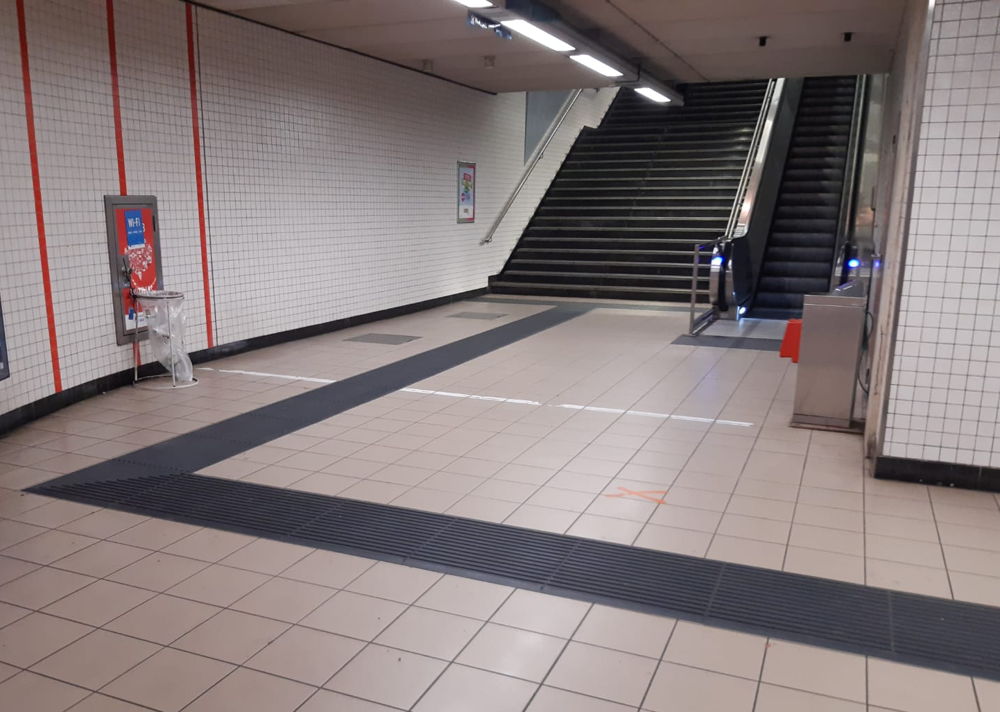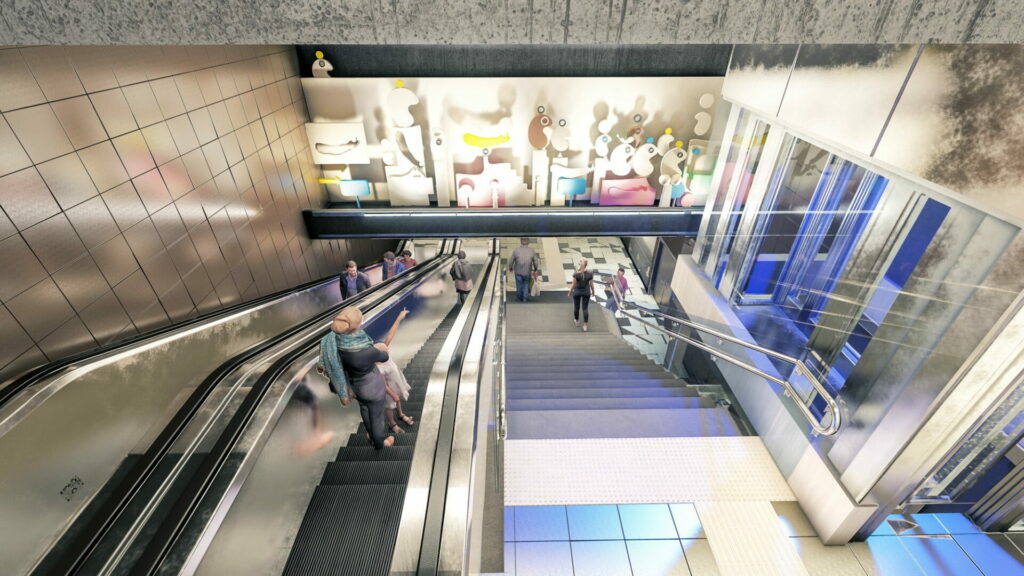Practical studies have shown that it can be extremely difficult for people with disabilities to get around Brussels on public transport, however, an increasing number of stations are becoming more accessible.
Of the 69 metro and pre-metro stations across the Brussels region, 53 are now fully equipped with lifts following the opening of new lifts in the Anneessens pre-metro stations this month in a bid to improve the accessibility of public transport operator STIB's network.
"It is a priority for us to make the entire STIB network fully accessible to everyone. This is why we are diligently pursuing the transformation of all our (pre)metro stations," Elke Van den Brandt, Minister of Mobility and Public Works, said, adding that these changes are also useful for all other travellers, including parents carrying prams or senior citizens.

Porte de Hal metro station, where blind guide tiles were placed. Credit: Brussels Mobility
In addition to lifts being placed, an increasing number of changes are made in stations to benefit visually impaired people. Blind guide tiles are being placed in the Porte de Hal station, where four new lifts and access ramps were installed at platform level earlier this year.
These help to guide visually impaired people by complementing the warning markings added to yellow pillars in Braille and the Brailled maps in all metro stations. The safety lines marking the edge of the platforms are also all indicated with raised markers.
"Our accessibility programme is continuing, with results. Most of the network is now equipped with lifts and the works or studies for the last, most complex stations are being carried out," said Philippe Yenny, Director of Public Transport Infrastructure at Brussels Mobility.
"At the same time, new guidelines for the design of (pre)metro stations mean that we are putting new equipment into service, more specifically the guidance devices for visually impaired people," he added.
Improvements take time
STIB is currently carrying out more work to improve the accessibility of six other stations, including Albert, Horta, Jacques Brel, Madou, Simonis and Parc, where the second phase of work will start. The initial phase saw a lift being installed to connect the ground level to level -1 (where the platforms are).
In the new phase, three additional lifts will connect the three levels of the station (the ground floor outdoors, the ground floor platforms and the mezzanine level between the two levels where tickets are sold, among other things), but these works are only expected to be completed by 2025.
Meanwhile, in stations where the space between the platform and the metro trains has not yet been adjusted in line with the introduction of the new M7 metro cars remains a major obstacle.
Related News
- Drug use in Brussels metro stations on the rise
- STIB to make tram network more accessible for wheelchair users
"It goes without saying that it is not easy to adapt an existing metro station and make it accessible. It takes time because you also have to take into account the space on public roads and therefore municipal and regional plans, opinions of consultation committees," a STIB statement at the end of last year noted.

